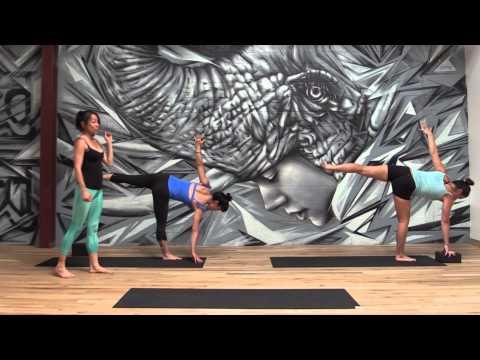Breathing is one of the most fundamental yet often overlooked components of a successful workout. Whether you’re a seasoned athlete or just beginning your fitness journey, mastering the art of breath control can significantly enhance your performance and overall well-being. This article will guide you through the best breathing techniques tailored for various types of workouts, helping you harness the power of your breath to boost endurance, reduce stress, and optimize recovery. We understand that finding the right rhythm can be challenging, but with empathy and practical advice, we’re here to support you every step of the way. Let’s explore how mindful breathing can transform your exercise routine and elevate your fitness experience.
Mastering Breath Control for Enhanced Performance
Optimizing your breathing during workouts can significantly boost your endurance, focus, and overall performance. To begin, try the Diaphragmatic Breathing technique, which involves breathing deeply into your diaphragm rather than your chest. This method maximizes oxygen intake and can be particularly effective during aerobic exercises. To practice, place one hand on your chest and the other on your abdomen, inhaling deeply through your nose and allowing your stomach to expand.
Another technique worth exploring is the Box Breathing, also known as square breathing. This method is excellent for calming the mind and enhancing concentration. To perform it, follow these steps:
- Inhale through your nose for a count of four.
- Hold your breath for a count of four.
- Exhale through your mouth for a count of four.
- Hold again for a count of four before repeating.
For those engaged in high-intensity workouts, the 2:1 Breathing Technique can be particularly beneficial. This involves exhaling for twice as long as you inhale, helping to expel more carbon dioxide and enhance lung efficiency. Here’s a simple breakdown:
| Step | Duration (Counts) |
|---|---|
| Inhale | 2 |
| Exhale | 4 |

Understanding the Science Behind Breathing and Exercise
Breathing is more than just an involuntary action; it is a powerful tool that can significantly enhance your workout performance. Understanding how breathing affects your body during exercise can transform your routine and optimize your results. When you exercise, your muscles require more oxygen, and efficient breathing techniques ensure that oxygen is delivered effectively. Diaphragmatic breathing, or deep belly breathing, is a fundamental technique that can help maintain energy levels and reduce fatigue. By engaging your diaphragm, you allow for a greater intake of oxygen, which can help improve endurance and focus.
- Box Breathing: Inhale for four seconds, hold for four seconds, exhale for four seconds, and hold again for four seconds. This method can help control stress levels during intense workouts.
- Nasal Breathing: Inhaling and exhaling through the nose can increase nitric oxide levels, which helps in vasodilation, improving blood flow and oxygen delivery to the muscles.
- Pursed-Lip Breathing: Inhale through the nose and exhale slowly through pursed lips. This technique can enhance lung capacity and is particularly useful for endurance exercises.
| Technique | Benefits |
|---|---|
| Diaphragmatic Breathing | Increases oxygen intake and energy levels |
| Box Breathing | Reduces stress and improves focus |
| Nasal Breathing | Enhances blood flow and oxygen delivery |
| Pursed-Lip Breathing | Improves lung capacity and endurance |

Practical Techniques to Improve Your Breathing During Workouts
Improving your breathing during workouts can significantly enhance performance and endurance. Here are some practical techniques to help you breathe more effectively:
- Diaphragmatic Breathing: Also known as belly breathing, this technique involves inhaling deeply through your nose, allowing your diaphragm to expand and fill your lungs with air. This method increases oxygen intake and helps maintain energy levels.
- Breath Control: Coordinate your breath with your movements. For example, exhale during exertion (like lifting weights) and inhale during relaxation (like lowering weights). This not only helps stabilize your core but also optimizes oxygen flow to your muscles.
- Nasal Breathing: Breathing through your nose can filter and humidify the air, making it easier on your respiratory system. It also encourages a steady, rhythmic breathing pattern, which is crucial for maintaining pace and focus.
| Technique | Benefits |
|---|---|
| Diaphragmatic Breathing | Increases oxygen intake, boosts energy |
| Breath Control | Stabilizes core, optimizes oxygen flow |
| Nasal Breathing | Filters air, maintains rhythmic pattern |
Remember, practice makes perfect. Incorporate these techniques into your routine gradually, and soon you’ll find yourself breathing easier and performing better.

Incorporating Mindful Breathing for Stress Reduction and Focus
Mindful breathing is a powerful tool that can transform your workout experience by reducing stress and enhancing focus. When you practice mindful breathing, you’re not just inhaling and exhaling; you’re creating a bridge between your body and mind, allowing for a more harmonious workout. Here are some ways to integrate this practice effectively:
- Box Breathing: This technique involves inhaling for a count of four, holding the breath for four, exhaling for four, and holding again for four. It’s a simple method that can be done anywhere and helps to center your thoughts.
- 4-7-8 Breathing: Inhale deeply for four seconds, hold the breath for seven seconds, and exhale slowly for eight seconds. This technique is particularly effective for calming the nervous system before a high-intensity workout.
- Nostril Breathing: Alternate between blocking one nostril and breathing through the other. This practice can enhance lung capacity and improve focus, making it a great addition to any workout routine.
Here’s a quick comparison of these techniques:
| Technique | Best For | Duration |
|---|---|---|
| Box Breathing | Focus & Calmness | 1-5 minutes |
| 4-7-8 Breathing | Stress Reduction | 2-3 minutes |
| Nostril Breathing | Breath Control | 3-5 minutes |
Integrating these techniques into your routine not only aids in stress reduction but also sharpens your mental clarity, allowing you to perform at your best. Remember, the key is consistency and patience as you cultivate this mindful practice.








































